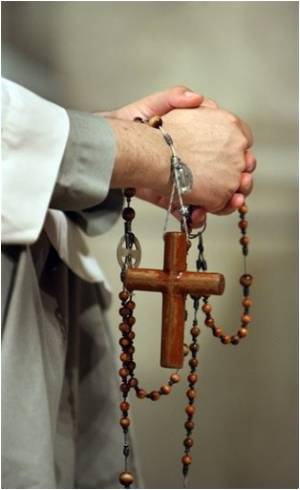Rows of granite slabs mark the spot where ancient Jewish graves lay just outside the 11th-century walls that surround Avila in central Spain.

A plaque explains, in Spanish and English, that the cemetery was dismantled after Spain's King Ferdinand and Queen Isabella in 1492 banished Jews from Spain as part of a policy to unite the country under the banner of Catholicism.
The garden illustrates how five centuries after Spain expelled its Jews and moved to erase all traces of their existence, cities across the country are searching for the remains of their medieval synagogues, restoring Jewish cemeteries and identifying old Jewish neighbourhoods.
"We knew there was a Jewish cemetery there and we decided to highlight it," Avila mayor Miguel Angel Garcia Nieto said at his office in the city's imposing 19th century town hall.
"We can't live with our backs to the reality that many people around the world have their roots here in Spain, including Avila, whose ancestors were forced to leave," he added.
Although estimates vary, historians believe at least 200,000 Jews lived in Spain before the 1492 expulsion. Many who refused to convert or leave were burned at the stake.
Advertisement
Now two dozen cities and towns across Spain have banded together in a Network of Jewish Quarters to try to revive and promote their Jewish history by building monuments, putting up signs identifying historic sites and hosting concerts, lectures and other cultural activities.
Advertisement
The network, founded in 1995, signed a cooperation agreement two years ago with Spain's tourist board, Turespana, to promote its sites in Argentina, Brazil, Mexico and the United States, which have large Sephardic Jewish populations.
Last year, it launched an online project with Google, which offers historical timelines, maps and photographs of ancient landmarks of Jewish life in Spain.
- 'Economics plays central role' -
Critics argue the effort to revive and promote Jewish heritage sites is as much about trying to attract tourists as it is about honouring the country's Jewish legacy.
They say local governments, in their eagerness to attract tourists, are often promoting old Jewish quarters with no original structures, cemeteries whose location is still undetermined and synagogues that have little trace of ever having been synagogues.
"The economic component here plays a central role because if it was solely about reclaiming the past then doing so would entail more than refurbishing some old buildings and alleyways," said Michael Freund, a syndicated columnist for the Jerusalem Post.
"It would also require refurbishing the national consciousness and memory. Very little about the Inquisition, which sought to hunt down Jews and torment them, is being taught in Spanish schools."
In Avila, a 21-room hotel with rooms named after Jewish thinkers now occupies the spot where a synagogue is thought to have once existed.
The sites of the two other synagogues which once existed in Avila are now occupied by private homes that have no signs of ever being a house of worship except for discreet street signs.
Spanish officials involved in the effort to highlight Jewish heritage say its not fair to say they are motivated by the search for more tourists.
"We don't ask anyone who visits us what their religion is," said Garcia Nieto, the mayor of Avila.
Assumpcio Hosta, the secretary general of the Network of Jewish Quarters, concedes that some member cities have few physical remnants of Spain's Jewish past.
"There are some cities where the buildings are no longer there, the streets are no longer there, you don't see so much but instead there are many documents from that period which are of interest," she said.
"It's not that they don't have the history, it's that the history is not so visible," she added.
Source-AFP








